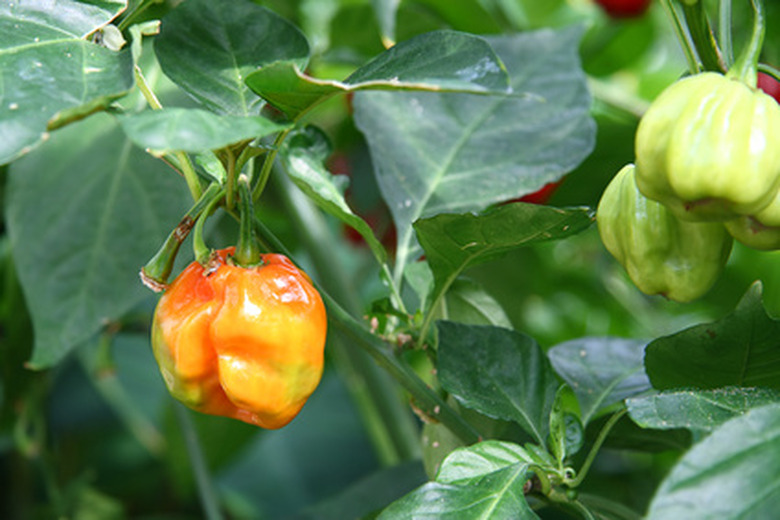Capsaicin As An Insecticide
Capsaicin, technically a phenylpropanoid, is the ingredient in hot chili peppers that makes them hot. Habanero peppers, which have a high rating on the Scoville scale that measures the hotness of peppers, are a favorite source for obtaining capsaicin. Capsaicin is increasingly being used as an insect repellent for organic growers who wish to avoid treating their plants with artificial chemicals.
History
Capsaicin was first registered for use as a biochemical pesticide in the U.S. in 1962. In November 1991, the EPA reclassified capsaicin as a non-toxic, naturally occurring biochemical pesticide.
Description
Dried, ground hot chili peppers (Capsicum frutescens L) chili peppers are ground in a fine power. The powder is dissolved in a solvent and distilled. This produces oleoresin, a concentrated, reddish-brown liquid with a pungent taste but little odor; it is the source of capsaicin that gives chili peppers their heat and that is a useful repellent for some insects
- Capsaicin, technically a phenylpropanoid, is the ingredient in hot chili peppers that makes them hot.
Uses
Capsaicin is primarily used as a fast-acting strong irritant used to repel animals and birds, not as an insecticide.
Capsaicin is considered an environmentally sound way to avoid the contamination of food and drinking water by the residue of synthetic agrochemicals. Capsaicin is applied to plant foliage to repel insect pests, not kill them. It will also repel bees and other insects needed for pollination and other purposes. Capsaicin is used both outdoors and indoors to repel aphids, lace bugs, leafhoppers, spider mites, thrips, white flies and other insects. Applying capsaicin on vegetables and fruits is a useful way to prevent insects from laying their eggs; preventing insects from reproducing limits their damage to leaves, fruits and vegetables.
Application
Capsaicin insecticides come in the form of dusts, powders and sprays that are applied by hand-held devices on ground or by crop dusters. This is when growers may inhale capsaicin or get it in their eyes.
- Capsaicin is primarily used as a fast-acting strong irritant used to repel animals and birds, not as an insecticide.
- Capsaicin is considered an environmentally sound way to avoid the contamination of food and drinking water by the residue of synthetic agrochemicals.
Warning
Since capsaicin in hot peppers have been consumed by humans in their food without adverse effects, it is not regarded as toxic. Its dangers come when capsaicin in the form of insecticide or repellent sprays or powders are inhaled or get in the eyes.
If it sprayed in the eyes, capsaicin can cause burning and temporary blindness. If it is inhaled, it can cause coughing and nausea.
Ingesting excessive amounts of capsaicin can cause burning in the gastrointestinal tract from the mouth to the anus.
